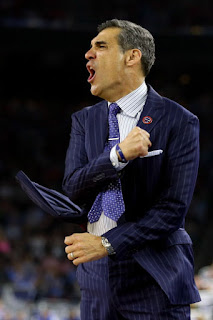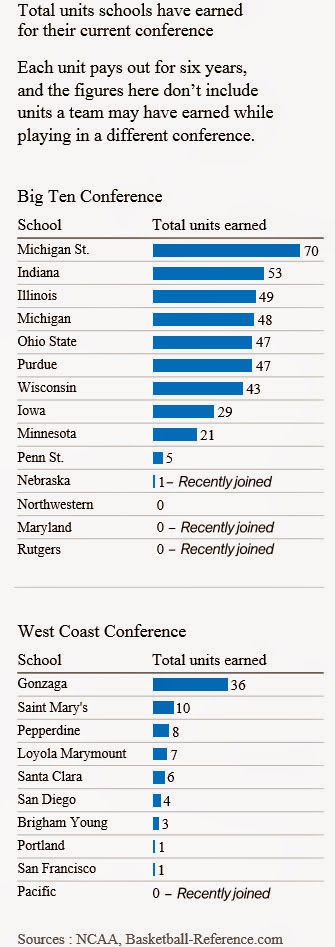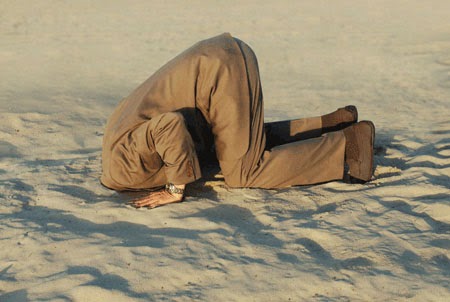.
In spite of the fact college
basketball is an amateur sport, there is nothing amateur about the way money is
generated from the NCAA playoffs. So
massive is the revenue that it far surpasses even the Super Bowl.
Perhaps a better gauge of popularity
is the amount people bet on the games and here
Las Vegas knows the winner. For every dollar bet on the Super Bowl, at
least seven dollars are bet during March Madness, well over $7 billion.
In fact, if you combine revenue from
the entire NFL playoffs including the Super Bowl, it is one third less than the
NCAA playoffs. If you combined all the
revenue from the professional NBA, Major League Baseball, and National Hockey
League playoffs, it is still one third less than the NCAA playoffs.
King Midas is alive and well in NCAA
country.
When it comes to college basketball,
one might be driven crazy by all the constant changes in conference members,
the odd television broadcast schedules, the incessant drive for perfection, and
the big business aspects.
There is a reason for these things
as big business is big bucks.
Of course in spite of all the
billions of dollars spent during March Madness, the players, those gladiators
in the ring, get nothing.
But ad revenue is just a small part of the story. Investopedia identifies four more
extremely lucrative ways the tournament makes money, none of which goes to the
players:
1) Broadcast rights: In April 2010, the NCAA inked a deal with CBS that made
the network its exclusive March Madness outlet. The contract lasts for 14 years
and is worth a whopping $10.8 billion. This contract alone is projected to
generate $771 million per year for the NCAA.
2) "The basketball fund": The NCAA's annual March Madness revenue
is divided among the different basketball-playing schools and conferences (i.e.
the Pac-12, SEC, etc.) based on factors such as schools' numbers of sports
teams, scholarships awarded and tournament performances.
Conferences also have a hand in divvying up these large money pots (between
2005 and 2011, the top-earning Big East conference made $86.7 million) either
evenly amongst schools or based on March Madness performance and revenue
generated. According to
Forbes, a team's trip to the Final Four
earns its conference $9.5 million.
3) Ticket sales and sponsorships: During March Madness, tickets and sponsors
generate about $40 million in revenue. Combined with the money from the
broadcast rights, this accounts for 96% of the NCAA's total annual revenue.
4) Wagers: What happens in Vegas stays in Vegas, especially if it involves
an unlucky March Madness bet. Americans wager an estimated $7 billion a year on
the tournament. That is $1 billion more than the Super Bowl.
Also, consider the average ticket price at face value for the final four in
Indianapolis is about
$1,400 per person with fees up to $500.
Of course if
Kentucky
gets in, from the neighboring state, the scalped price may have no ceiling.
Finally, the economic impact of the NCAA tournament for host cities
generates millions and millions of dollars in local revenue not to mention the
Friday through Monday night schedule for the Final Four, meaning people will
spend four days to see two games.
Because of the complexity of the money trail, I am including an excellent
report done by Bloomberg Business on the business of money and the NCAA March
Madness. You would do well to review it
in detail.
March Madness Makers and
Takers
The way the NCAA
distributes the staggering revenue from the basketball tournament has created a
polarized system where some schools make money and others just take it.
By David Ingold and Adam
Pearce | March 18, 2015
Twenty five years ago, the NCAA
decided something had to be done about March Madness money. The year before,
CBS agreed to pay a record $1 billion to broadcast the 1991-1997 tournaments.
That was fine with the powerhouse basketball schools that routinely made it
into the postseason: Under the rules at the time, they divided most of the revenue
based on the number of games they won.
Conference officials feared that without a change, a handful of schools would
get rich while others got nothing, and the student athletes competing in the
tournament would face increasing financial pressure to win games.
Annual TV revenue from NCAA Division I men’s basketball
tournament $800 million CBS and Turner Broadcasting begin $10.8 billion ,
14-year deal Basketball Fund goes into effect after CBS nearly triples annual
revenue to $143 million ,TV rights switch to CBS from NBC Source: NCAA reports
Note: Chart shows the average annual rate over the course of a contract.
The Basketball Fund Is Born
So in 1990 the NCAA created the
“basketball fund,” a plan intended to more fairly divvy up tournament revenue
and parcel it out among the country’s Division I schools.
The new plan cut the amount of the payout that’s directly tied to teams’ wins
and losses. Most of the tournament’s TV revenue is now earmarked for things
like academic programs and financial assistance for student athletes. Even
schools that don’t play in the postseason get a cut.
The remaining amount makes up the basketball fund—and it’s no small pot. Last
year the fund totaled about 28 percent of the tournament’s TV revenue, or about
$194 million. These coveted dollars are won or lost on the basketball court,
and the battle among schools to claim them accounts for a lot of the Madness
each March.
The tournament TV contract brought in $700 million in 2014…
$498 million went to Division I schools… with $194 million given via the
basketball fund… $199 million this year … and that amount keeps growing.
How It Works
Teams earn a “unit” for every
tournament game they play up to the championship game. So a team that makes it
to the final four will earn five units. Each unit is worth a specific amount
each year. Instead of paying schools directly for the units they win, however,
the NCAA now gives the units to a team’s conference, and the conference is
responsible for distributing the money to its members. A conference can divide
up the money however it wants, but the NCAA suggests schools evenly split the
payout, and most conferences follow the recommendation.
The End of the $300,000 Free
Throw
One goal of the basketball fund
was to reduce the financial impact of individual wins and losses. Under the old
system in which schools were paid each year for their wins, a player who missed
a single game-winning free throw cost his team $300,000 or more. The fund
changed that by spreading out the tournament payments over six years; and since
that money is also split among the dozen or so teams in a conference, the
dollar value attached to any single game is diluted.
Every unit won in 2015 will be worth at least $1.6 million over six years. For
a strong team like Kentucky,
which might earn as many as five units if it makes it to the final four, that
once meant a massive payout at the end of the tournament. Under the basketball
fund, those units will be split with the other 13 schools in the Southeastern
Conference—dropping the per-school value of its units earned this year to about
$560,000 over the next six years.
Conferences Are Key
One big effect of the fund is
that it shifts the emphasis from winning teams to winning conferences. All 350
Division I teams will get a cut of this year’s $200 million basketball fund—but
strong conferences with many winning teams will rack up more units and take
home a much bigger share of the pile.
The nation’s top basketball programs have historically been in one of six major
conferences: the ACC, Big East, Big Ten, Pac-12, Big 12, and SEC. These
conferences only account for 20 percent of the teams in Division I, but they’ll
likely receive about 60 percent of the basketball fund payout this year.
The fund is supposed to be about rewarding performance, and it’s fitting that
the top programs will receive the largest cut of the money. But the strongest
conferences also include schools with weak basketball programs—and they get an
equal cut of the winnings even if they didn’t play a single game in the
tournament.
Basketball Fund earnings by conference, 1991 - 2015
A System of Makers and Takers
This focus on conferences instead
of teams has resulted in a system of makers and takers, where colleges in a
conference lean on a few key schools with powerful basketball teams to earn
money for everyone else.
Take Michigan State,
a Big Ten school that’s earned 21 units during the current six-year payout
period. That translates to about $5.1 million for the Big Ten in 2015 alone.
After its earnings are lumped together with the rest of the conference and
equally doled out, MSU will get back one-third of the amount it’s put in. Other
top makers include Duke, Kansas, Kentucky, and North
Carolina.
This effect is magnified in smaller conferences, where a single team could be
responsible for the bulk of tournament appearances. Gonzaga University
plays in the West Coast conference and is responsible for half of its revenue.
It gets back an even smaller share, roughly 20 percent of what it contributes.
The inverse can be true for weak programs in strong conferences. An extreme
case would be Northwestern
University, which also
plays in the Big Ten. Unlike Michigan
State, Northwestern has
never made it to the NCAA tournament – not once since 1939.
Despite contributing zero units over the last 30 years, Northwestern has
received an estimated $24.5 million from the fund. This year, the school will
receive roughly $2.2 million, the same amount as Michigan State.
The chart below compares how much schools have earned for their conference and
how much they've gotten back. It assumes conferences equally split their
basketball fund revenue like the NCAA suggests. Looking at all the schools
together, it's clear that some are getting back a lot more than they put in.

Makers and takers by conference, 1991 - 2015
Movers and Shakers
Schools are continually changing
conferences, typically to improve their financial situation. Though
football-related money is the biggest motivator, all that jumping around also
has a big impact on the basketball fund, since schools rely heavily on one
another for units. Conferences with multiple earners can tough out the loss of
a powerful team. But the departure of a breadwinner can mean a huge financial
hit for weaker conferences.
Take the Horizon League, a mid-sized conference with schools from the Midwest that doesn’t have the depth of the ACC or Big
Ten. Twice the conference has lost its top earner to the Atlantic 10, a more
financially attractive conference. Xavier left in 1995, Butler in 2012. The last of the units Butler earned for the
Horizon League expire in 2016, and if another program doesn't step up, the
League’s revenue could drop to $1.6 million in 2017 from $5 million in 2011.

The West Coast conference now
faces a similar situation with Gonzaga
University. Located in Spokane, Washington,
Gonzaga earns more than half the conference’s units and is a #2 seed in the
tournament. A strong March Madness showing could increase its attractiveness to
more powerful conferences. The school is already rumored to be a contender to
join the new Big East. That leaves West Coast schools to cheer Gonzaga's
success, count the millions it brings them, and pray everything stays the same.
.





























































